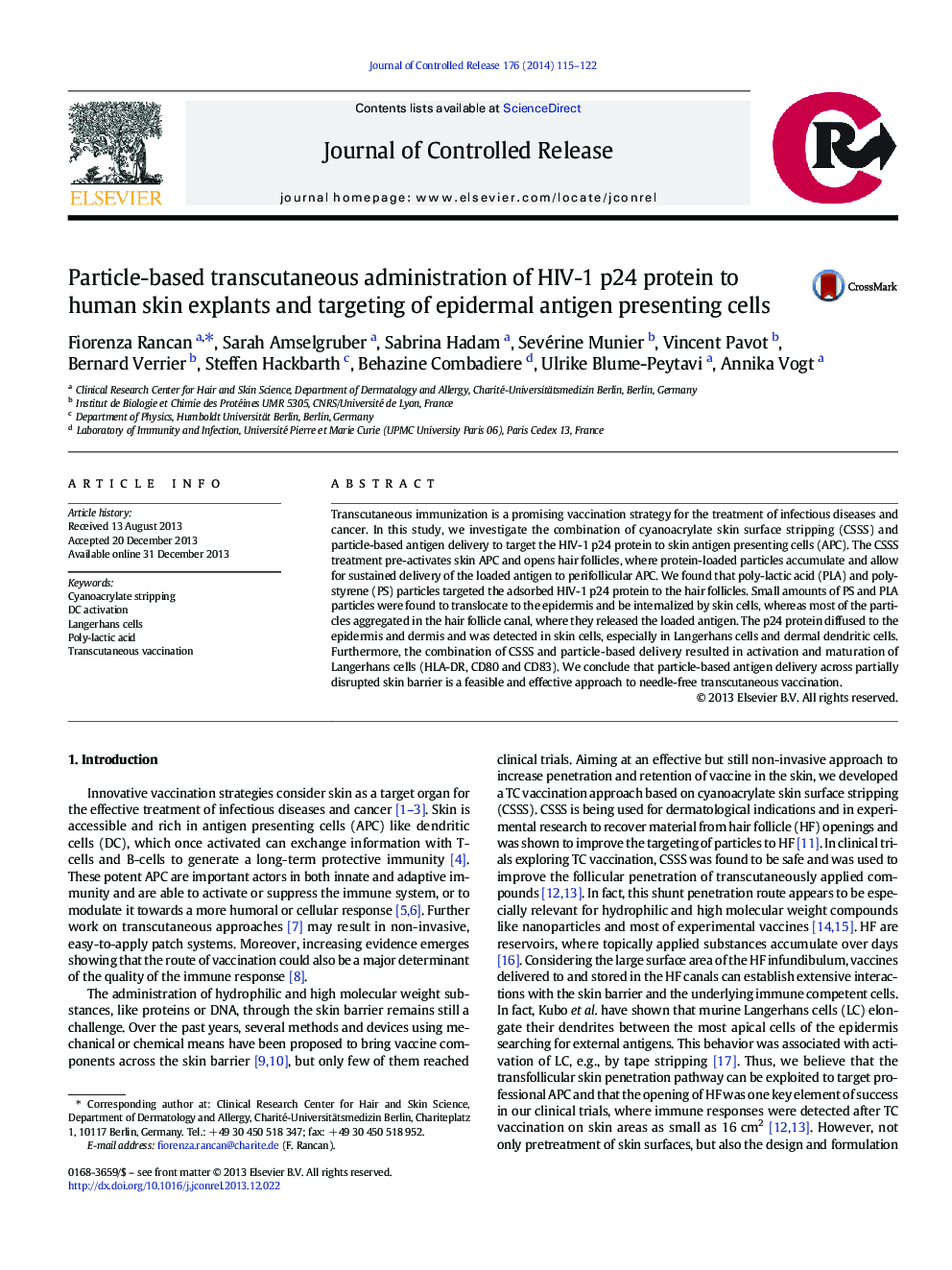| Article ID | Journal | Published Year | Pages | File Type |
|---|---|---|---|---|
| 1424128 | Journal of Controlled Release | 2014 | 8 Pages |
Transcutaneous immunization is a promising vaccination strategy for the treatment of infectious diseases and cancer. In this study, we investigate the combination of cyanoacrylate skin surface stripping (CSSS) and particle-based antigen delivery to target the HIV-1 p24 protein to skin antigen presenting cells (APC). The CSSS treatment pre-activates skin APC and opens hair follicles, where protein-loaded particles accumulate and allow for sustained delivery of the loaded antigen to perifollicular APC. We found that poly-lactic acid (PLA) and polystyrene (PS) particles targeted the adsorbed HIV-1 p24 protein to the hair follicles. Small amounts of PS and PLA particles were found to translocate to the epidermis and be internalized by skin cells, whereas most of the particles aggregated in the hair follicle canal, where they released the loaded antigen. The p24 protein diffused to the epidermis and dermis and was detected in skin cells, especially in Langerhans cells and dermal dendritic cells. Furthermore, the combination of CSSS and particle-based delivery resulted in activation and maturation of Langerhans cells (HLA-DR, CD80 and CD83). We conclude that particle-based antigen delivery across partially disrupted skin barrier is a feasible and effective approach to needle-free transcutaneous vaccination.
Graphical abstractFigure optionsDownload full-size imageDownload high-quality image (207 K)Download as PowerPoint slide
